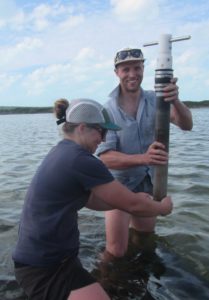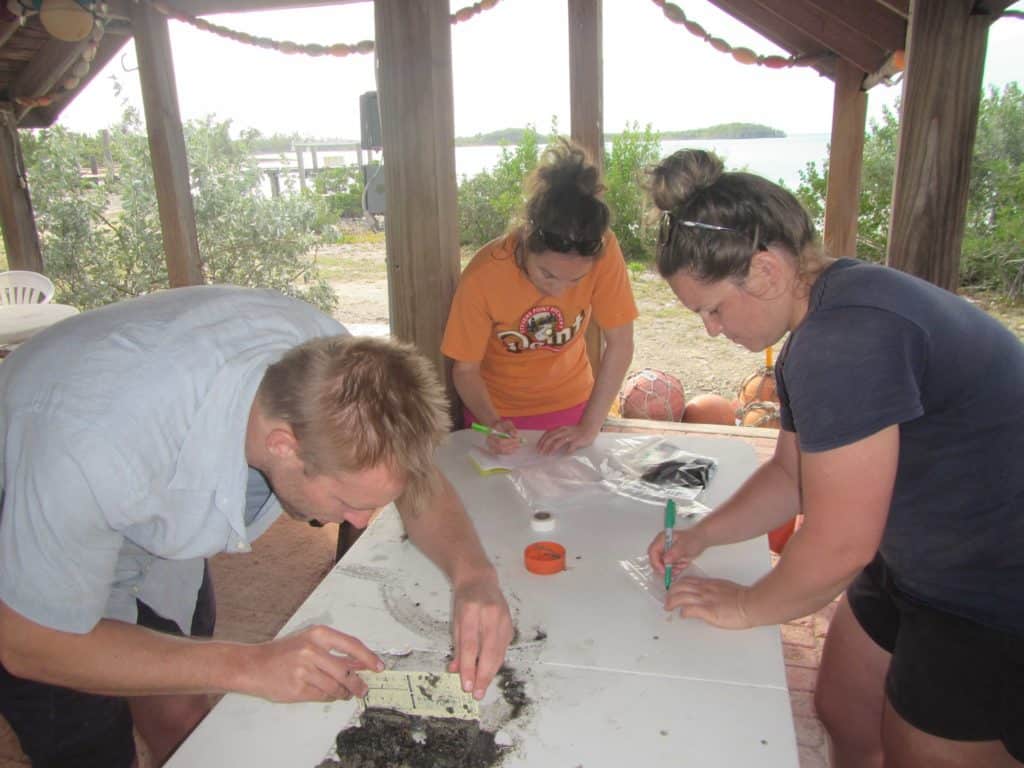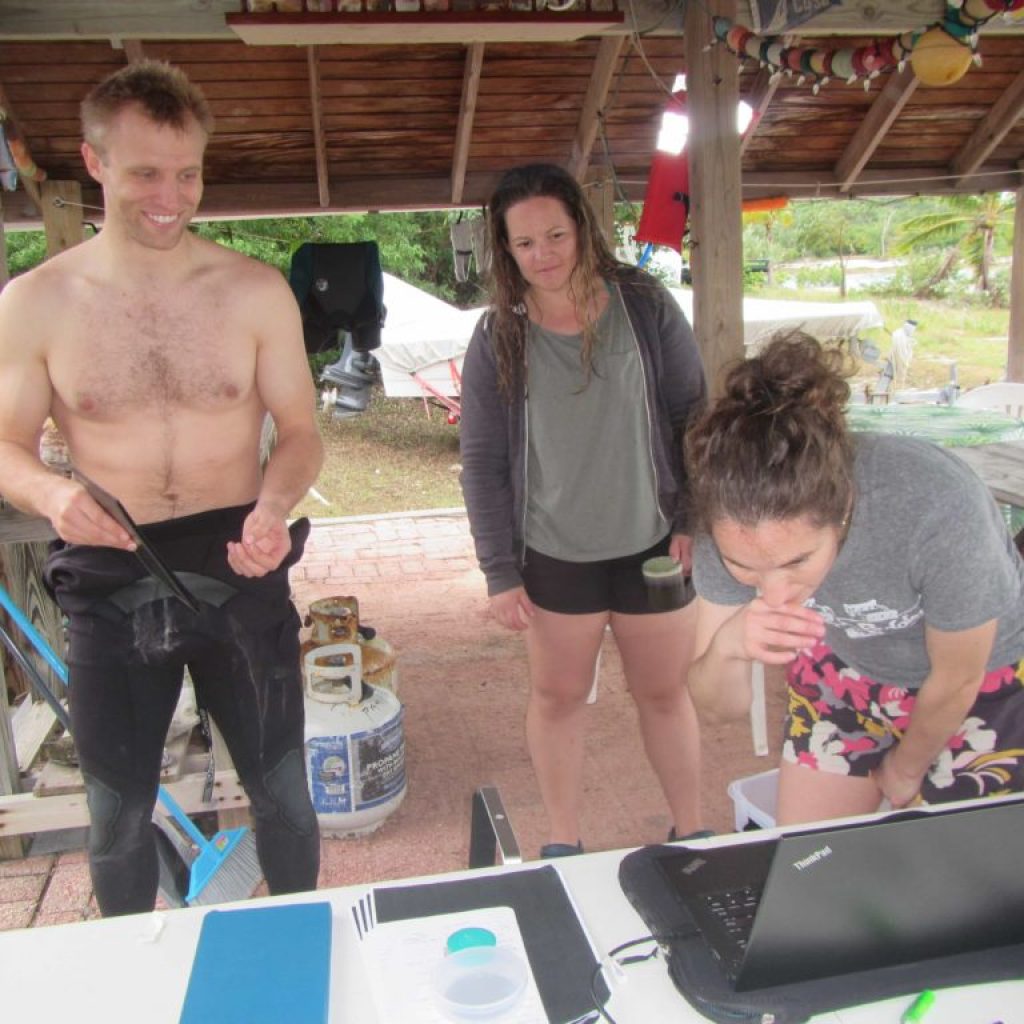 Researchers Lidya Tarhan and Noah Planavsky from Yale University, together with colleagues from University of Miami, Georgia Tech and University of Alberta, are studying modern shallow marine sediments in order to address issues related to bioturbation- the physical and chemical mixing of sediment by burrowing animals. Bioturbation is one of the most dramatic processes by which animals ‘engineer’ or modify the modern seafloor. Intensive sediment mixing is responsible for heightened nutrient cycling, the deep and pervasive oxidation of seafloor sediments, and colonization of the seafloor by benthic organisms (and thus the complexity and structure of seafloor communities). Bioturbation plays a considerable role in the regulation of both sedimentary and water-column biogeochemical cycling in the modern ocean. The evolution of animals capable of efficient sediment mixing and the development of well-bioturbated sediments in the geologic past therefore likely strongly influenced the development of modern-style biogeochemical cycling. However, efforts to reconstruct the biogeochemical consequences of bioturbation in deep time, using geologic bioturbation data, have been hampered by 1) a paucity of data quantitatively constraining the impact of bioturbation upon major element cycling in modern shallow marine settings; and 2) the wide range of proxies used by biogeochemists and ecologists to estimate the intensity of bioturbation—as these proxies have never been calibrated in a single system.
Researchers Lidya Tarhan and Noah Planavsky from Yale University, together with colleagues from University of Miami, Georgia Tech and University of Alberta, are studying modern shallow marine sediments in order to address issues related to bioturbation- the physical and chemical mixing of sediment by burrowing animals. Bioturbation is one of the most dramatic processes by which animals ‘engineer’ or modify the modern seafloor. Intensive sediment mixing is responsible for heightened nutrient cycling, the deep and pervasive oxidation of seafloor sediments, and colonization of the seafloor by benthic organisms (and thus the complexity and structure of seafloor communities). Bioturbation plays a considerable role in the regulation of both sedimentary and water-column biogeochemical cycling in the modern ocean. The evolution of animals capable of efficient sediment mixing and the development of well-bioturbated sediments in the geologic past therefore likely strongly influenced the development of modern-style biogeochemical cycling. However, efforts to reconstruct the biogeochemical consequences of bioturbation in deep time, using geologic bioturbation data, have been hampered by 1) a paucity of data quantitatively constraining the impact of bioturbation upon major element cycling in modern shallow marine settings; and 2) the wide range of proxies used by biogeochemists and ecologists to estimate the intensity of bioturbation—as these proxies have never been calibrated in a single system.
In January 2018, Lidya and Noah, along with Yale Ph.D. student Devon Cole, collected sediment cores from subtidal and peritidal settings around the Darby Island Research Centre in order to calibrate commonly used proxies for bioturbation intensity, including the radiotracer 210Pb and x-ray characterization of sediment fabric (i.e., the extent to which bioturbation has disrupted or homogenized sedimentary layering). Future research efforts will focus on the continued expansion of this dataset, as well as on coupling bioturbation and biogeochemical data (e.g., dissolved sulfate and oxygen profiles and trace element cycling). These data will be used to refine our current understanding of the impact of bioturbating organisms on modern marine biogeochemical cycling and as well as to build a larger and more robust dataset that can be used, in turn, to estimate the biogeochemical impact of secular trends in bioturbation throughout the geologic record.



